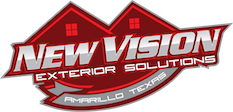What many people don’t know as they invest in a gutter system is they should be thinking about how large of a gutter they need. Gutters are often overlooked. They help prevent water damage to your house by directing rainwater away from your roof, walls, and foundation. Choosing the right gutter size and style can make all the difference in maintaining the structural integrity of your home.
In this blog post, we’ll cover everything you need to know about standard gutter sizes and dimensions, materials, and tips to help you choose the perfect gutters for your home.
Understanding the Importance of Gutters
Gutters direct rainwater away from your home. Without them, water could pool around your foundation, leading to cracks, basement flooding, and other structural issues. Installing the correct gutters will help prevent issues such as:
- Water damage to your roof and walls
- Soil erosion around your foundation
- Basement flooding
- Mold and mildew growth
Investing in a sound gutter system and maintaining it regularly will save your home from costly repairs.
Standard Gutter Sizes and Dimensions
Although five-inch K-style gutters and six-inch half-round gutters are common with many homes, some properties need additional gutter support to prevent pooling and overflowing water. When it comes to gutters, there are several standard sizes and styles to consider. The NRCA recommends a minimum gutter size of 5 inches for roofs. We’ll describe the different types of gutters and their benefits below:
K-Style Gutters
K-style gutters are the most popular type of gutters found in homes today. They are typically 5-inch and 6-inch in width and resemble crown molding. They are also relatively easy to install and best suited for homes with steep roofs.
Capacity: 5-inch K-style: 5,520 square feet; 6-inch K-style: 7,960 square feet.
5-Inch Half Round Gutters
Half-round gutters offer a classic look and are mostly found on traditional or historic homes. The 5-inch size is suitable for smaller roofs and areas that don’t see a lot of rainfall. These gutters are typically made from aluminum, copper, or steel materials.
Capacity: 5-inch Half-round: 2,500 square feet
6-Inch Half Round Gutters
For homes with larger roofs or areas that experience heavy rainfall, a 6-inch half-round gutter is an excellent option. While they are more effective in managing water, they can be more expensive than their smaller counterparts. Like the 5-inch version, 6-inch half-round gutters are available in various materials and colors to match your home’s exterior.
Capacity: 6-inch Half-round: 3,840 square feet.
Deep Gutters
Deep gutters, also known as high-capacity gutters, are designed to handle significant amounts of water, making them ideal for areas with heavy rainfall. They come in various styles, including K-Style and half-round, and are typically larger than standard gutters. Their depth suits them best for homes with steep roofs or extensive eaves.
Box Gutters
Box gutters are built into the roof’s edge, creating a seamless appearance. They are commonly found in older homes and commercial buildings. Box gutters come in various sizes, depending on the roof’s design and the water they need to handle. These gutters require regular maintenance to prevent clogs and leaks.
Ogee Gutters
Ogee gutters, also known as OG or Victorian gutters, have a decorative, curved profile that adds an elegant touch to your home’s exterior. They are available in various sizes, with 5-inch and 6-inch being the most common. Ogee gutters are known for their durability and ability to handle large volumes of water, making them a popular choice for homeowners looking for style and functionality.
Gutter Materials and Thickness

The durability and performance of your gutters heavily depend on the material used and their thickness. Common materials include aluminum, copper, steel, and vinyl.
Aluminum Gutters
70% of residential gutters are aluminum due to their lightweight nature and resistance to rust. They are available in various thicknesses, with .027 and .032 inches being the most common. Aluminum gutters are easy to install and available in many colors to match your home’s exterior.
Copper Gutters
Copper gutters are highly durable and offer a unique, elegant look. Over time, they develop a beautiful patina, adding character to your home. Copper gutters typically range in thickness from .016 to .032 inches. While copper gutters are more expensive, copper gutters can last over 50 years, making them a worthwhile investment.
Steel Gutters
Steel gutters are incredibly strong and can withstand harsh weather conditions. They are available in galvanized, stainless, and coated steel options. The thickness of steel gutters generally ranges from .024 to .032 inches. Galvanized steel gutters are prone to rust if not properly maintained, while stainless and coated steel options offer better corrosion resistance.
Vinyl Gutters
Vinyl gutters are affordable and easy to install, making them popular for DIY projects. They are typically available in thicknesses ranging from .040 to .055 inches. While vinyl gutters resist rust and corrosion, they may warp or crack in extreme weather conditions.
How to Choose the Right Gutter Size for Your Home
Homes with large and/or steep rooflines require extra consideration as you install a gutter system. Selecting the correct gutter size for your home involves several factors, including your roof’s square footage, pitch, and local rainfall. Here’s a step-by-step guide to help you determine the ideal gutter size for your home.
1. Measure Your Roof’s Pitch
First, you’ll need to measure the roof’s pitch with a 2-foot level and a tape measure (the steeper the roof is, the more rain the roof collects when it’s windy). Take the level and level it against the roof. Measure the distance between the middle of the level and the roof.
A 5-inch gap between the midway point of the 2-ft level is a 5 in 12 (inch) pitch. Based on the measured pitch you can find the roof pitch factor which you will need later to calculate the right gutter size.
Roof Pitch Roof-Pitch Factor
12 in 12 or higher 1.3
9 in 12 to 11 in 12 1.2
6 in 12 to 8 in 12 1.1
4 in 12 to 5 in 12 1.05
Flat to 3 in 12 1
2. Get the Square Footage of the Drainage Area
Then get the square footage of the drainage area. On a gable-end roof, measure the slope of each. For more complex roof designs you’ll need to capture the area (length x width) of each. Multiply the length by the width to calculate the square footage of each section. Add the square footage of all sections to determine your roof’s total square footage. Larger roofs will need bigger gutters to handle the increased water flow.
3. Find the Maximum Recorded Rainfall in Your City
Next, you’ll need to find the maximum amount of rainfall recorded in the city you live in via National Oceanic and Atmospheric Administration (NOAA). Keep in mind though it’s the worst case scenario ever recorded, it gives you a number to work off to protect your home in case of extreme weather. Areas with heavy rainfall require larger gutters to prevent overflow and water damage.
4. Calculate Adjusted Square Feet
Once you have the max rainfall over a five-minute interval, multiply that by the square footage of the drainage area and the roof-pitch factor.
Max Rainfall x square footage of drainage area x roof pitch factor
The end number of adjusted square feet will help you decide on the right gutter size.
Gutter Capacity for Adjusted Square Feet
K-Style Gutter
5-inch 5,520 square feet
6-inch 7,960 square feet
Half-round Gutter
5-inch 2,500 square feet
6-inch 3,840 square feet
You may also want to consider how much easier it is to clean a larger gutter. Debris is less likely to clog up gutters and continue with proper water flow as you choose six inch or larger gutters.
What Size Gutter Downspouts Does Your Home Need?
Downspouts are instrumental in directing water away from your home. Selecting the appropriate size and number of downspouts is key to achieving efficient water drainage.
How Many Gutter Downspouts Do You Need?
The number of downspouts you need depends on your roof’s size and the amount of water your gutters need to handle. A general rule of thumb is one downspout for every 20-30 feet of gutter. Evenly space downspouts to direct water away from your home’s foundation.
When to Hire a Professional Gutter Contractor
While some homeowners may feel confident installing or repairing gutters themselves, there are situations where hiring a professional gutter contractor is the best choice.
Advice on When to Seek Professional Help
Consider hiring a professional gutter contractor if:
- Your home has multiple stories or angles that make installing gutters a challenge.
- You’re unsure what size gutter to use or what material best suits your home.
- Your gutters are damaged and need to be repaired.
- You want to make sure your gutters are installed correctly.
Professional gutter contractors have the experience, tools, and knowledge to install, repair, and replace gutters safely.
Conclusion
By understanding the various gutter sizes, materials, and installation factors, you can choose the best gutters for your home. When choosing the appropriate gutter size, consider your roof’s square footage, pitch, and local rainfall patterns. For Amarillo homeowners needing assistance deciding on their gutter size and installing a gutter system, call New Vision Exterior Solutions today!

